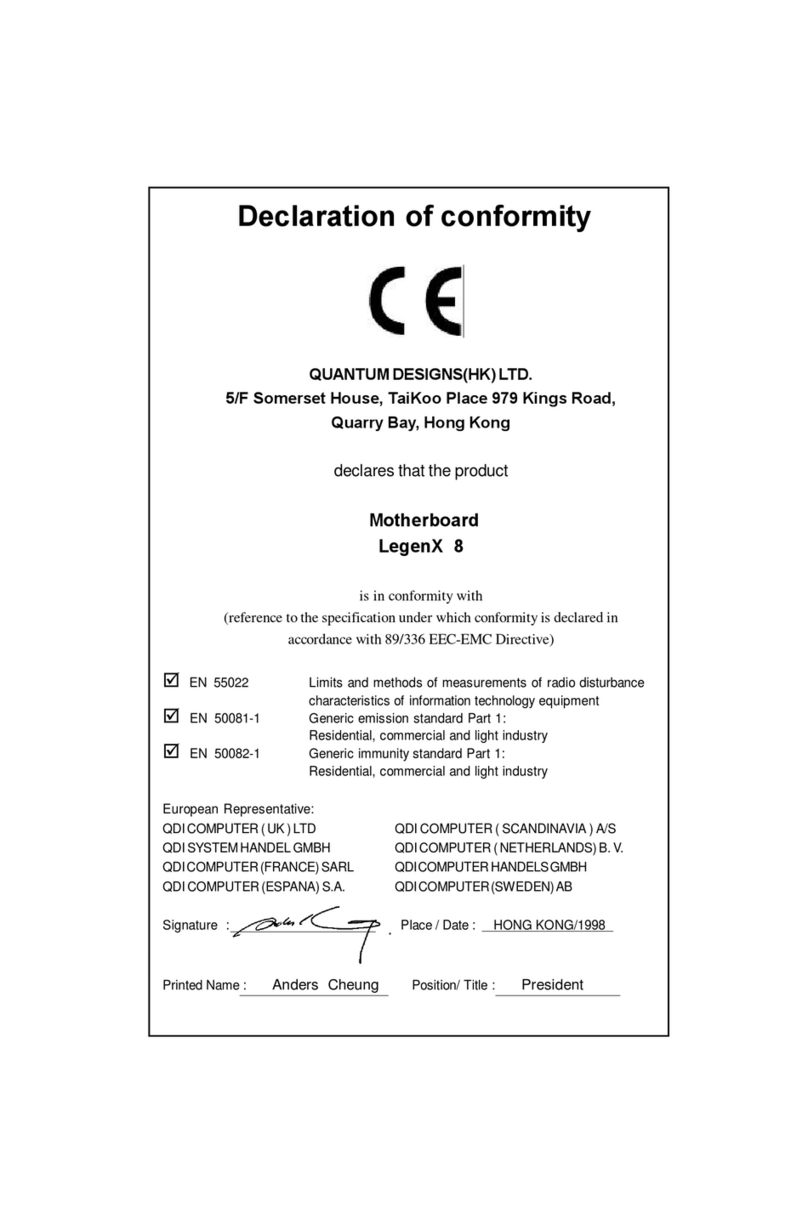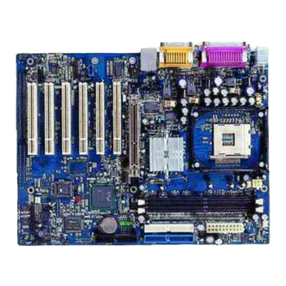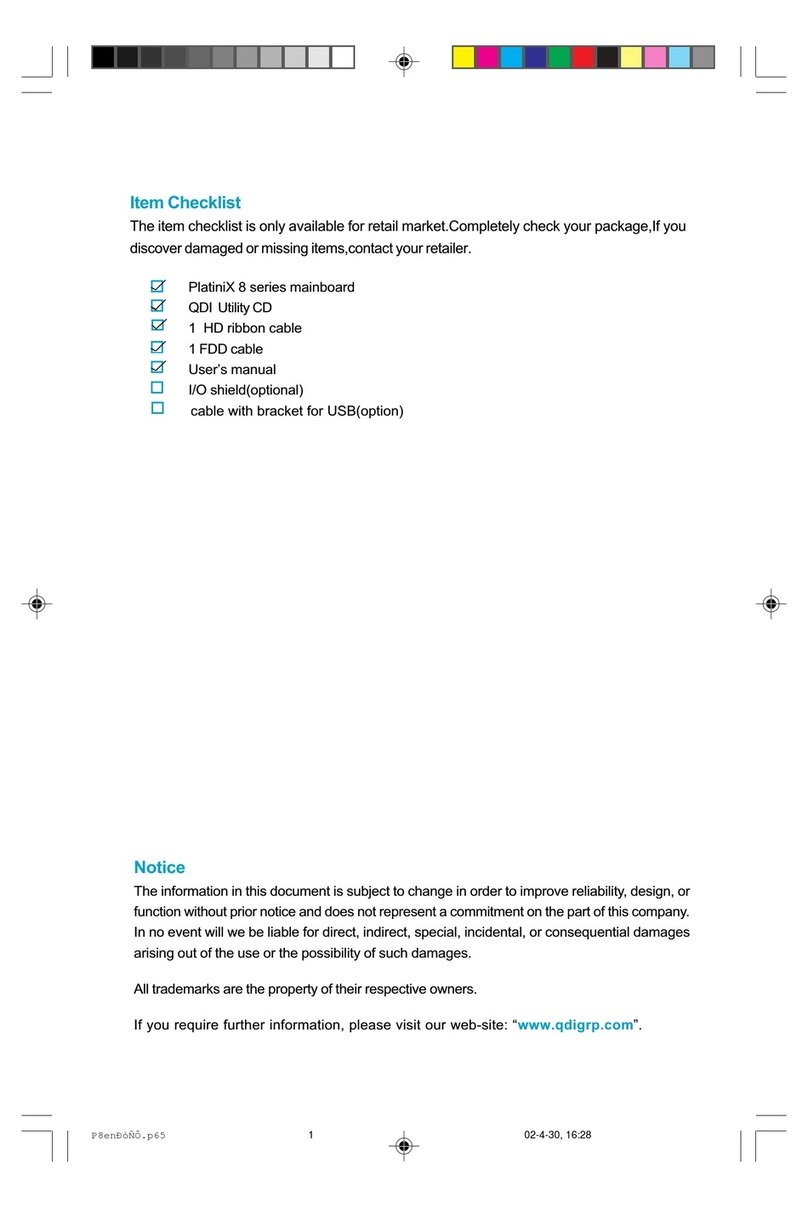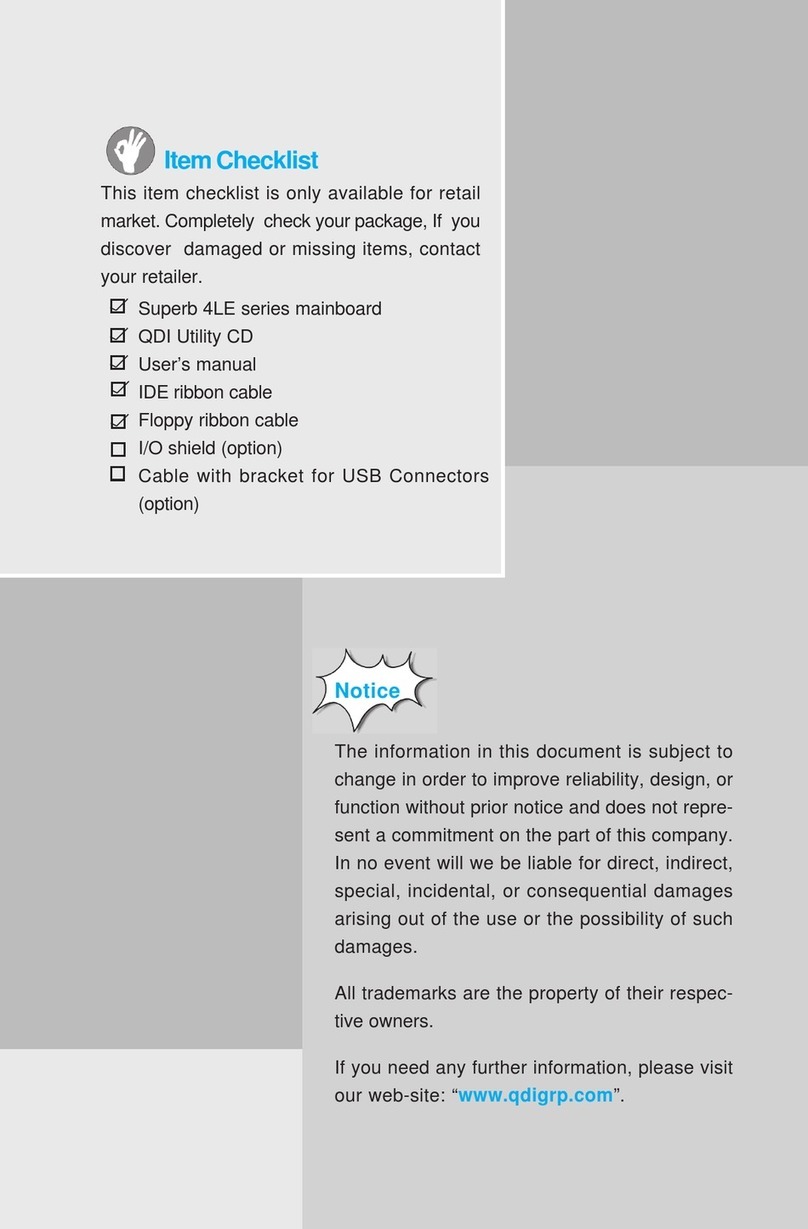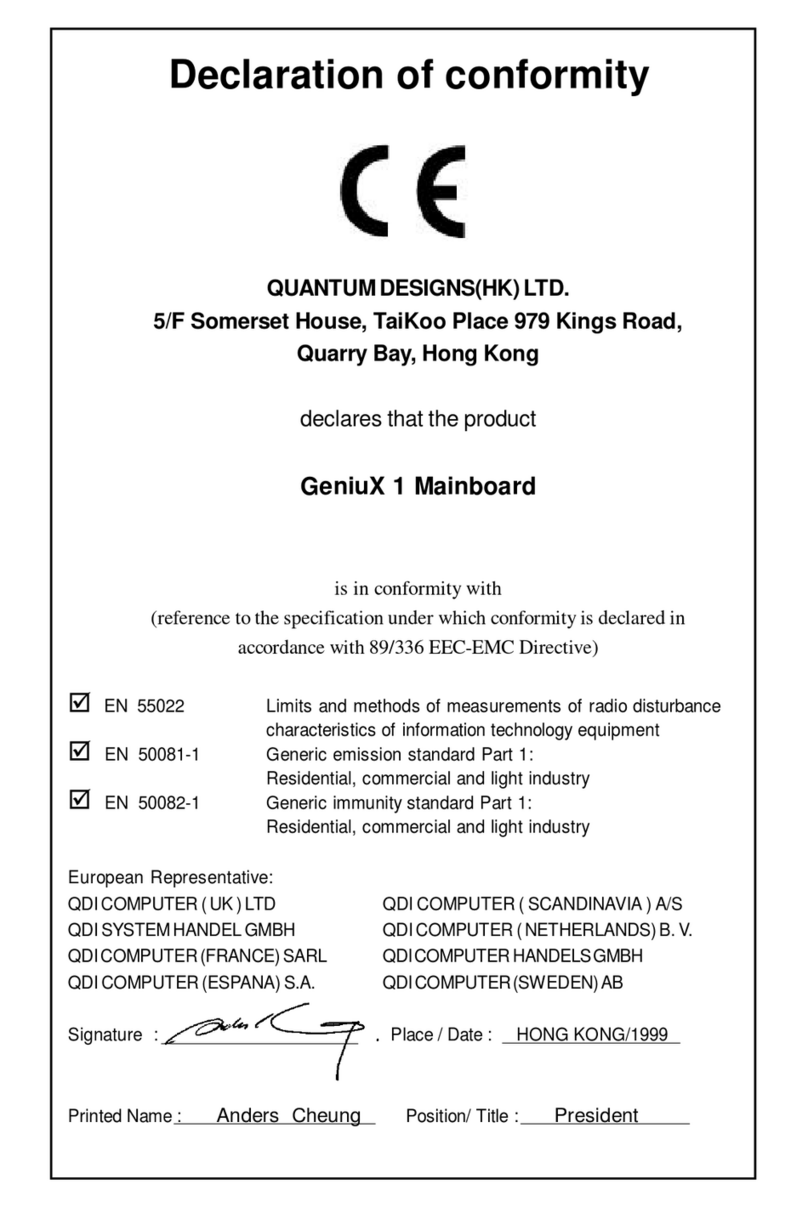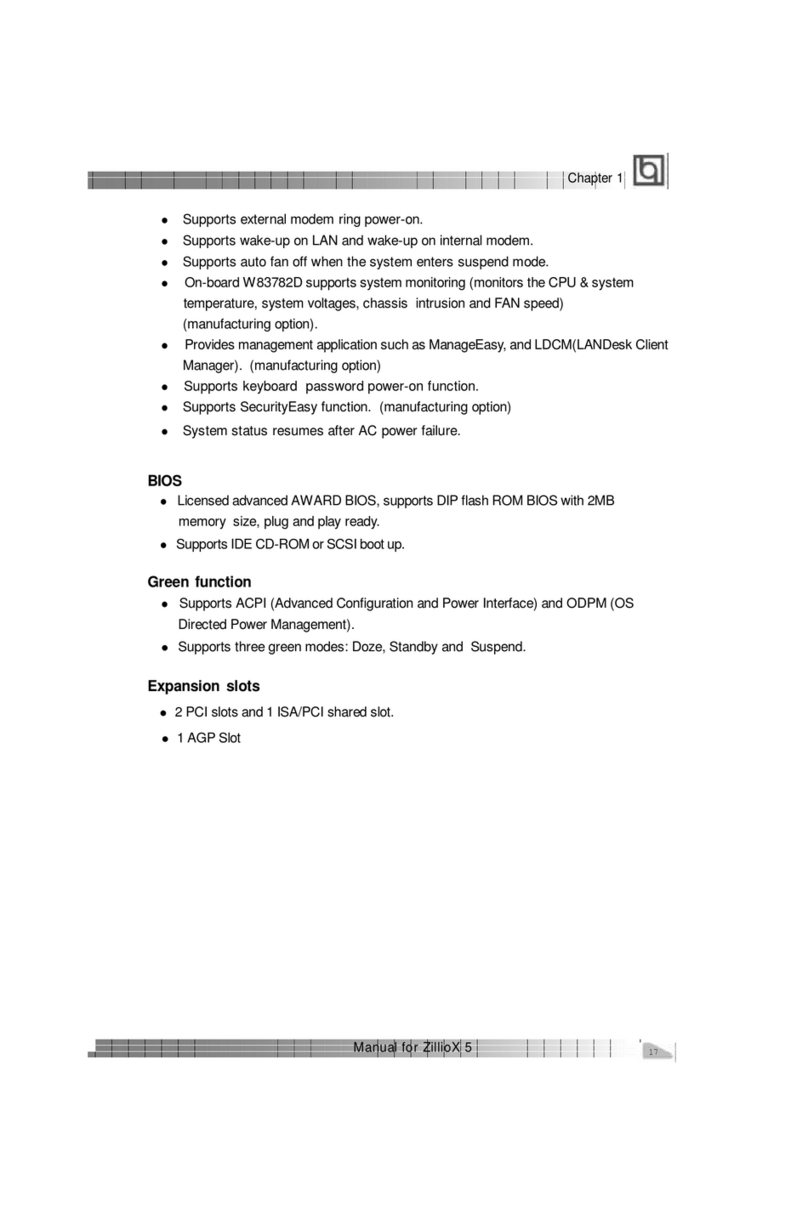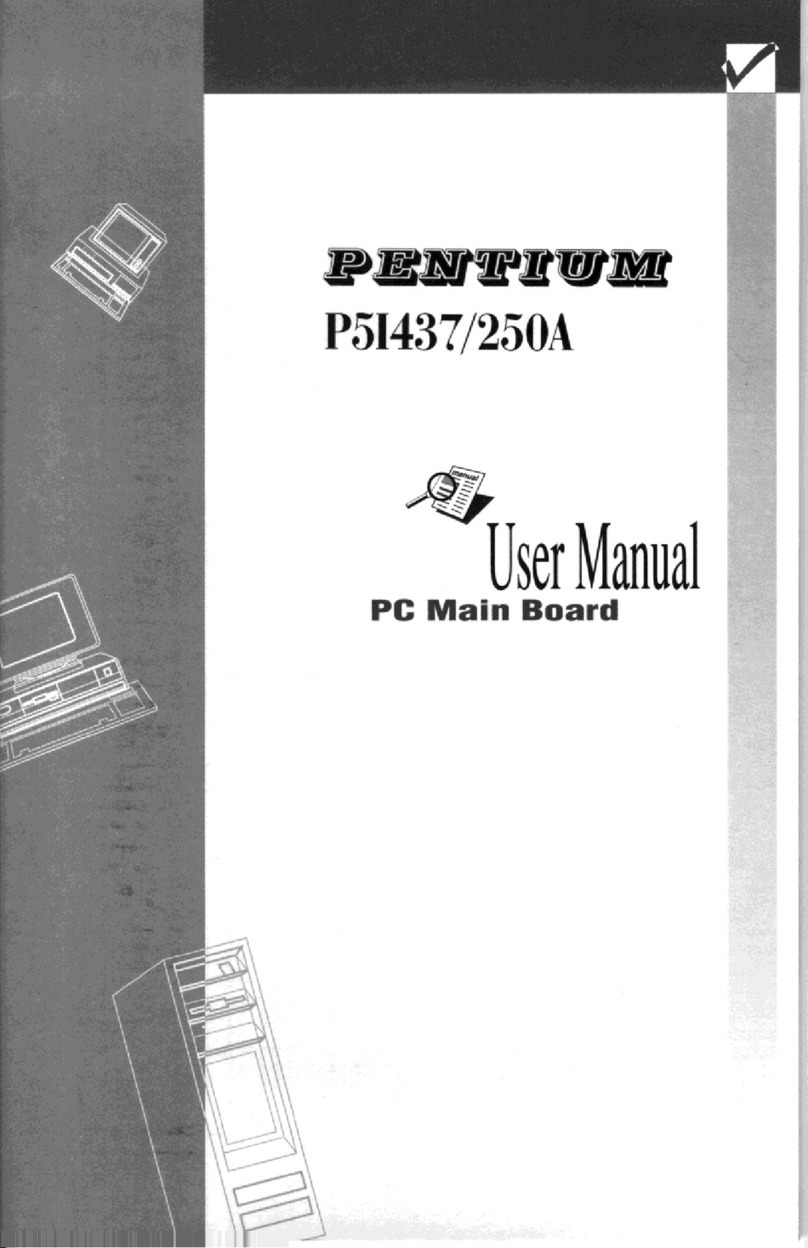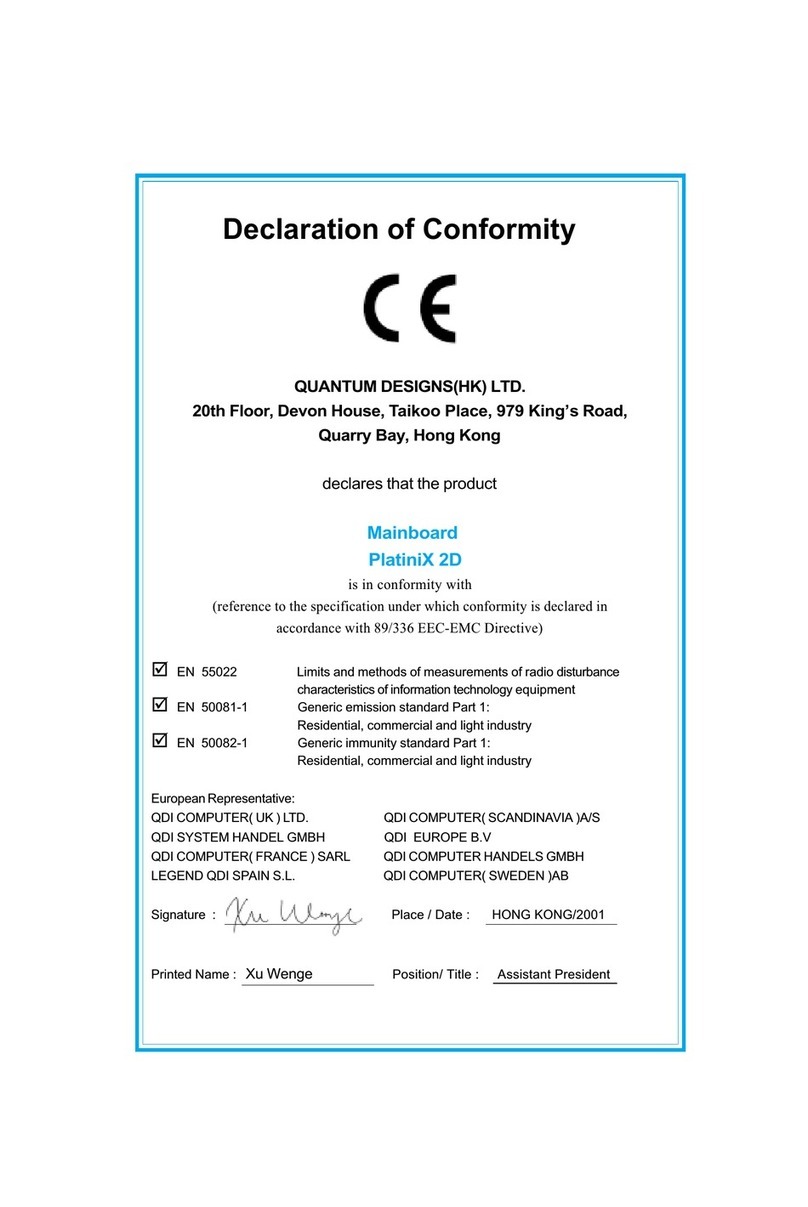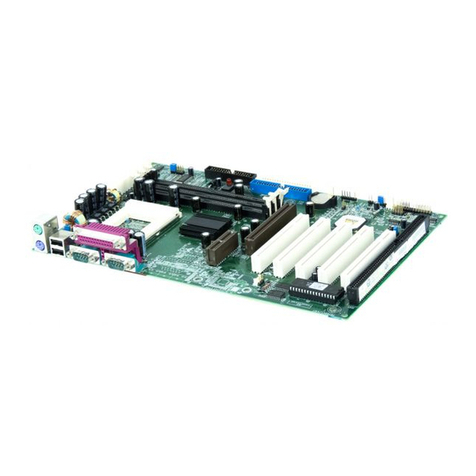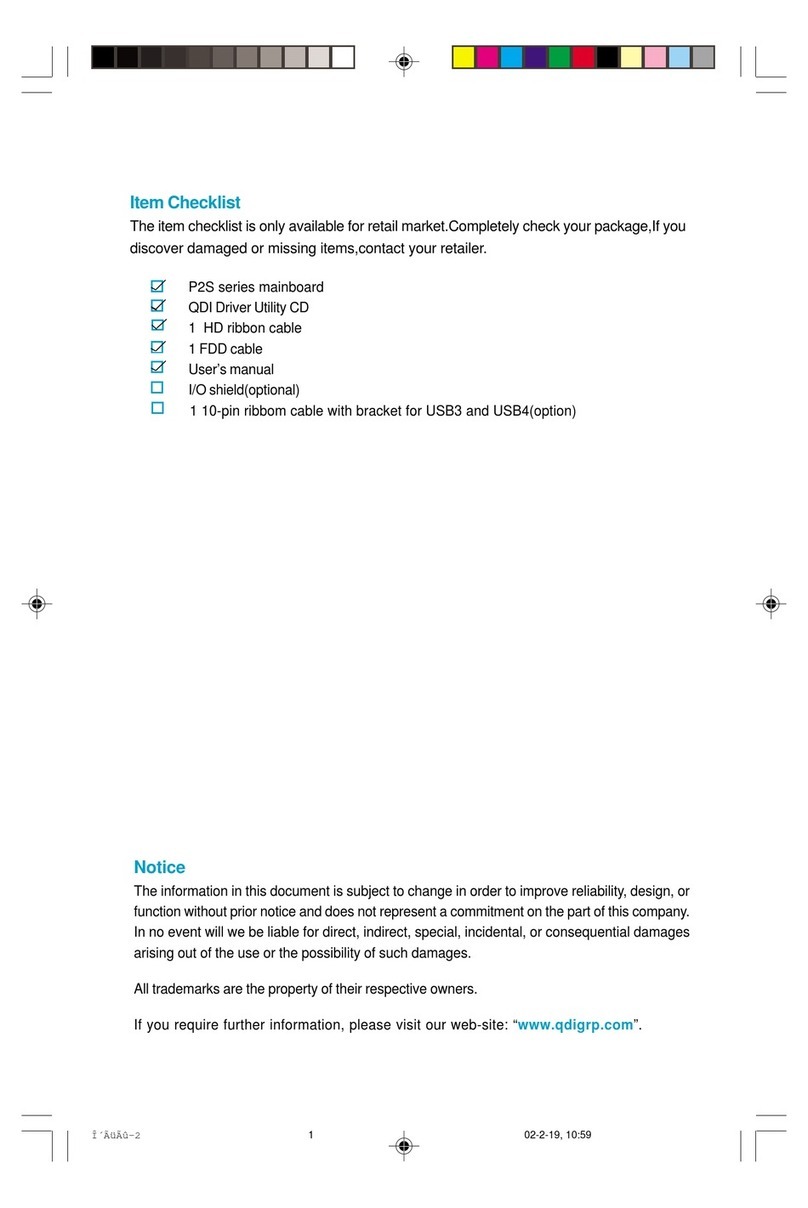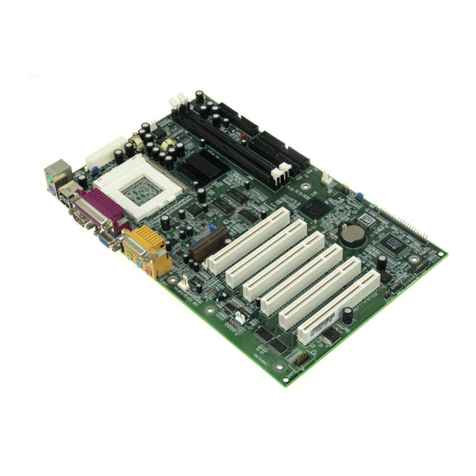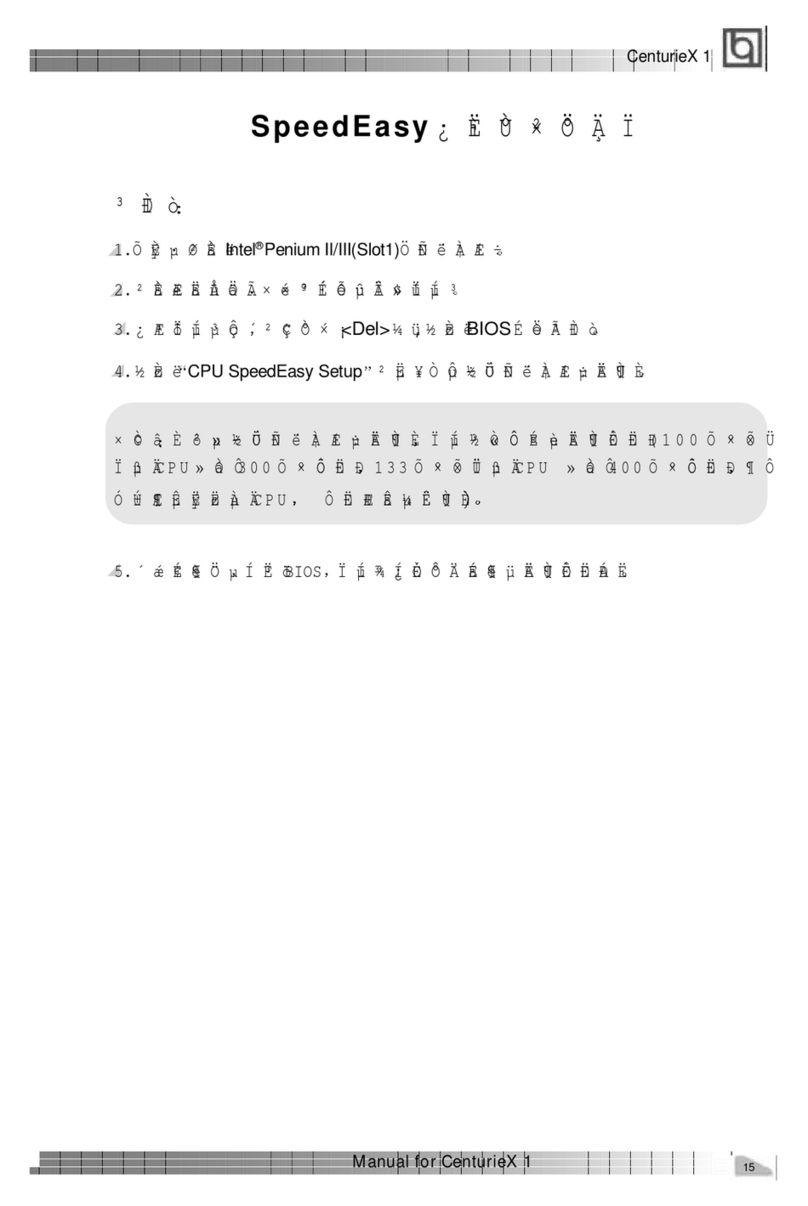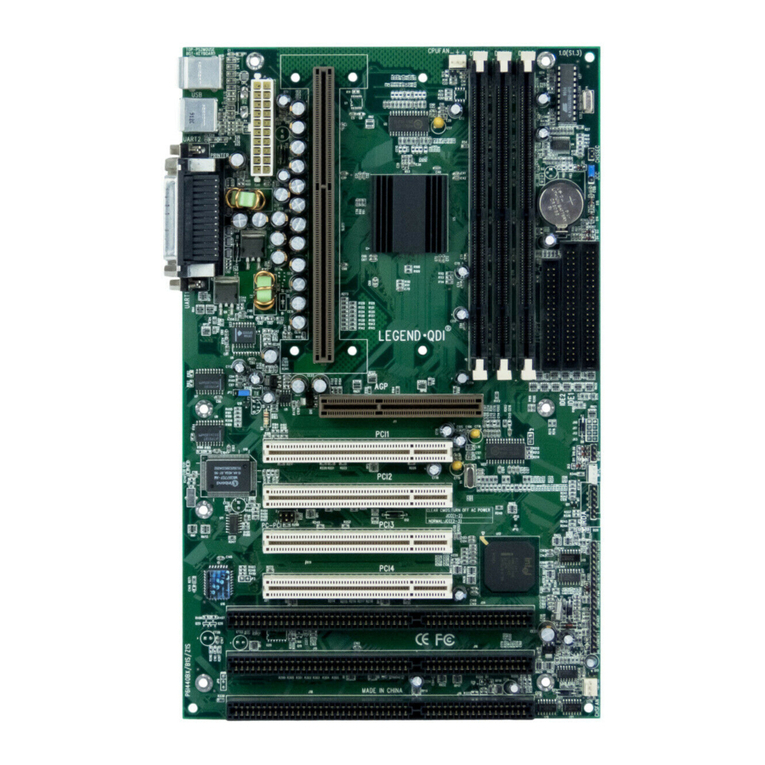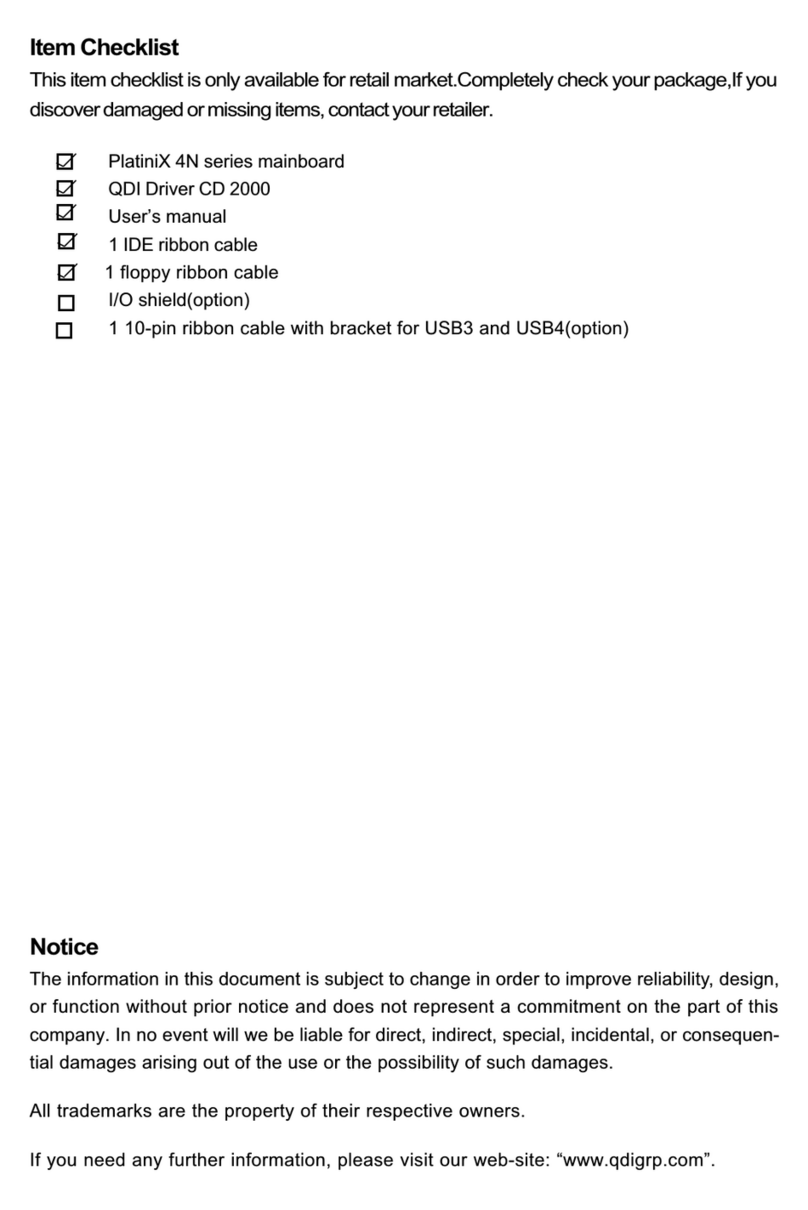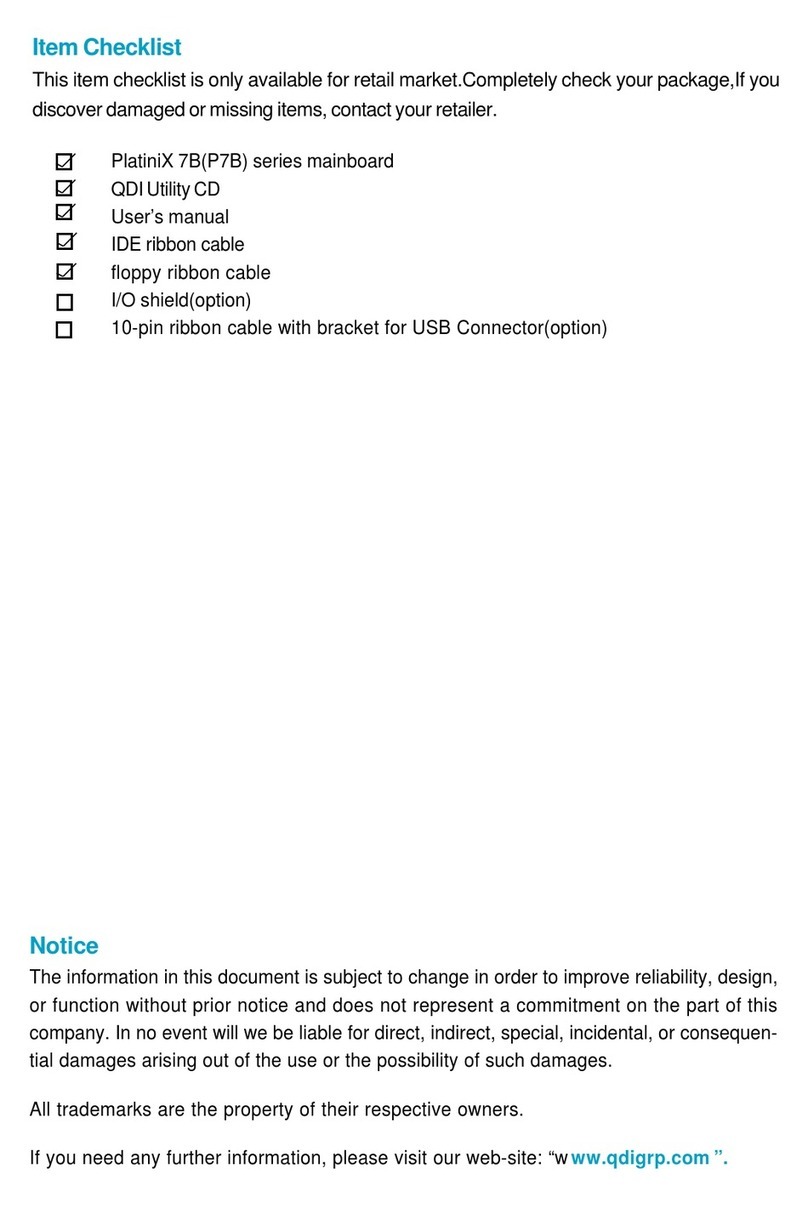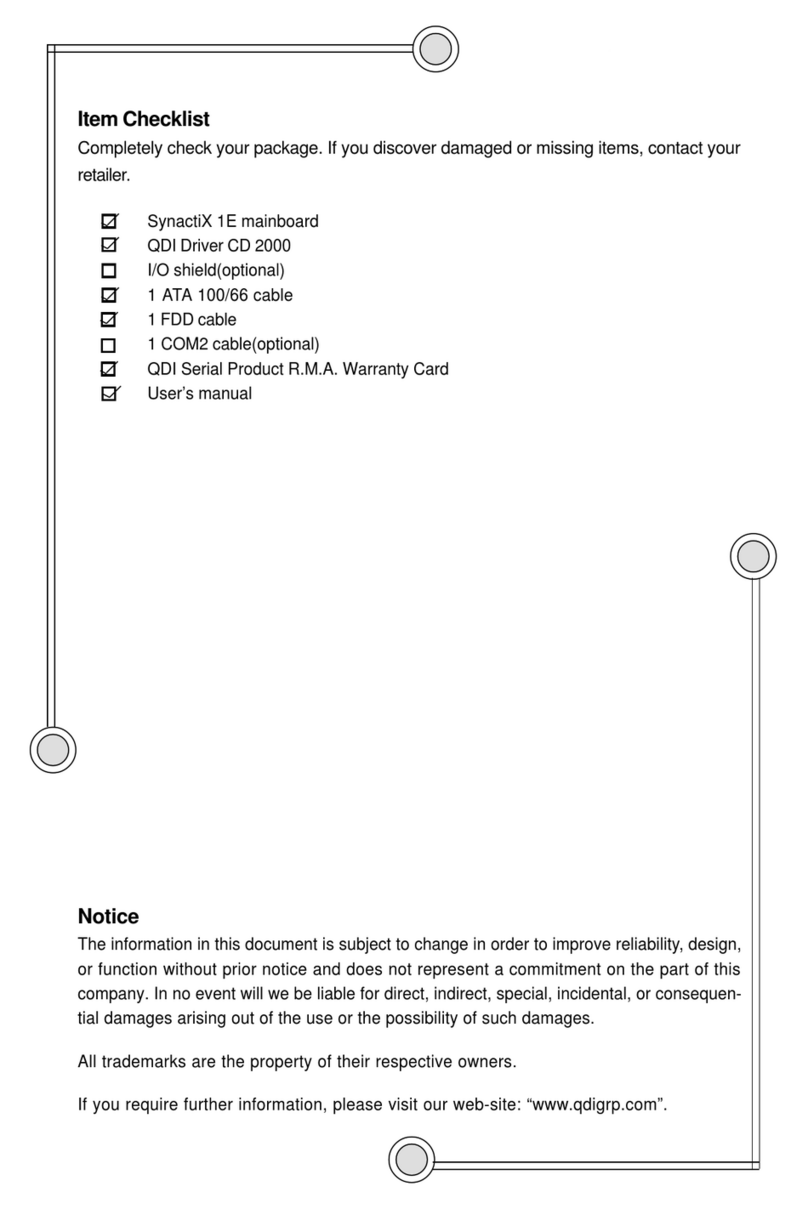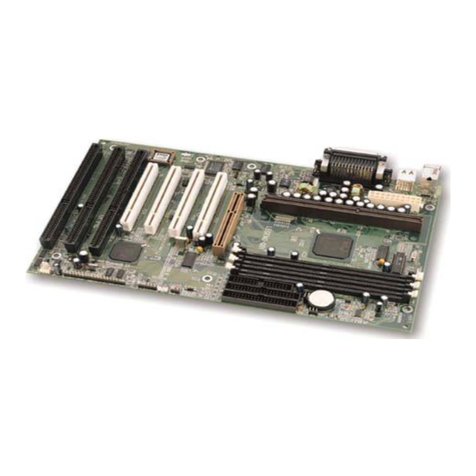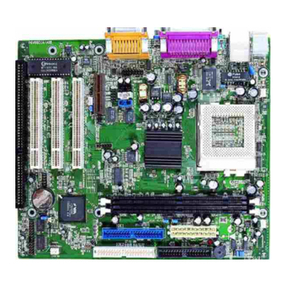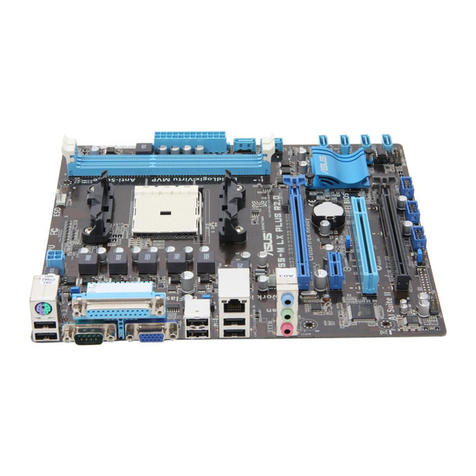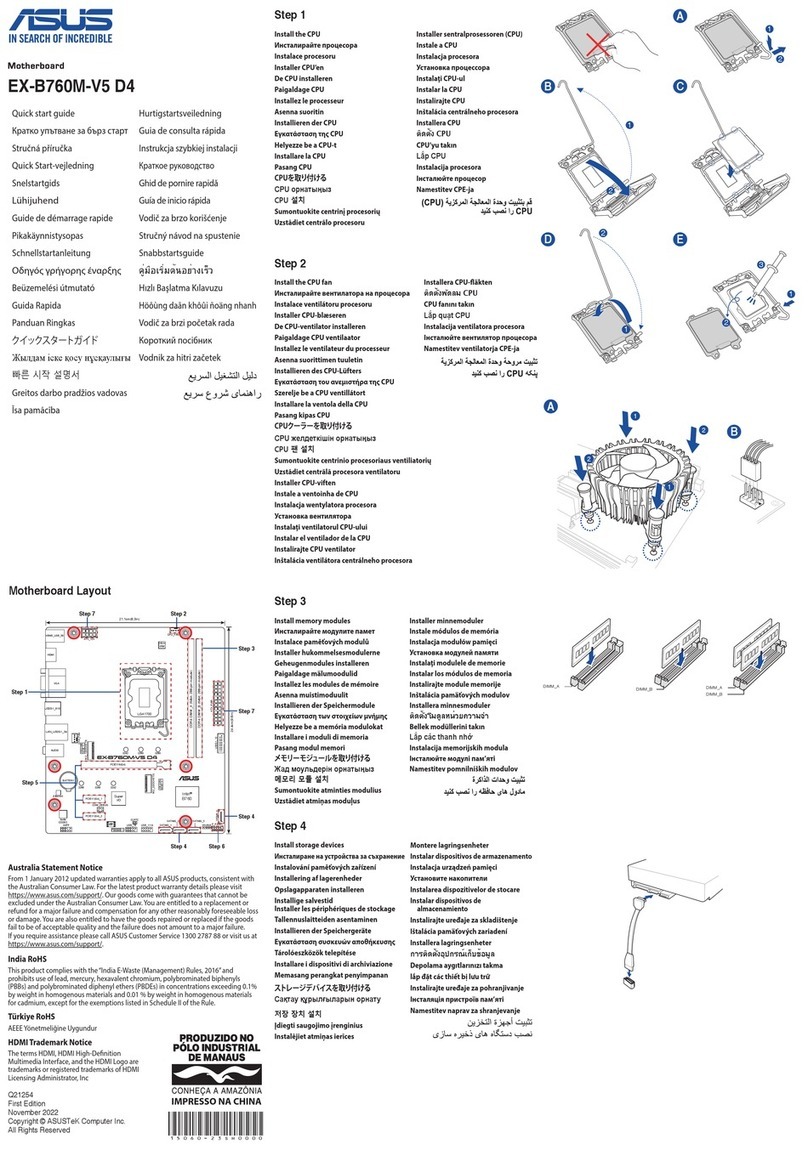
ManualforKinetiZ7A
Chapter1
IntroductiontoNewFeatures
BIOS-ProtectEasy
The BIOSofthemainboardiscontained inside the FlashROM.SeverevirusessuchasCIH
virusaresodangerousthatitmayoverwritethe BIOSofthe mainboard.If the BIOShas
been damaged,the systemwill be unabletoboot. Weprovide the following solution which
protectsthe systemBIOSfrombeing attackedbysuchviruses.
Therearetwochoiceswhichcan implementthisfunction.
1.Setthe jumper(JAV)asclosed,the BIOScan notbe overwritten.
2.Setthe jumper(JAV)asopen,meanwhileset“BIOS-ProtectEasy”asEnabledinAWARD
BIOSCMOSSetup.Inthisway,the BIOScannotbe overwritten,buttheDMIinformation
can be updated.
Refertopage 14 fordetailed information on jumpersetting,and page 22 forrelated BIOS
setting.
UltraATA/66
According tothe previousATA/IDEharddrivedatatransferprotocol,the signaling wayto
send datawasinsynchronousstrobe mode byusing the rising edge ofthe strobe signal.
The UltraATA/33 protocoldoublesthe bursttransferratefrom16.6MB/sto33.3MB/s,by
using boththe rising and falling edgesofthe strobe signal,thistimeUltraATA/66 doubles
the UltraATAbursttransferrateonceagain(from33.3MB/sto66.6MB/s)byreducing setup
timesandincreasing the stroberate.Thefasterstrobe rateincreasesEMI, whichcannotbe
eliminated bythe standard40-pincableused byATAand UltraATA.Toeliminatethis
increaseinEMI, anew40-pin,80-conductorcableisneeded.Thiscableadds40 additional
ground linesbetween eachoftheoriginal40 ground andsignallines.The additional40 lines
helpshieldthe signalfromEMI,reducecrosstalkand improvessignalintegrity.
UltraATA/33 introduced CRC (CyclicalRedundancy Check),anewfeatureofIDEthat
providesdataintegrityandreliability.UltraATA/66usesthe sameprocess.TheCRC value
iscalculated byboththe hostand the harddrive.Afterthehost-requestdataissent, the
hostsendsitsCRCtothe harddrive,andtheharddrivecomparesittoitsownCRC value.
If the harddrivereportserrorstothe host, then the hostretriesthe command containing
theCRCerror.
UltraATA/66 technologyincreasesbothperformanceand dateintegrity.Howeverthere
arebasicallyfiverequirementsforyoursystemtorun inUltraATA/66 mode:
1.The systemboardmusthaveaspecialUltraATA/66detectcircuit, suchas
KinetiZ7Amainboard.
2.The systemBIOSmustalsosupportUltraATA/66.
3.The operating systemmustbe capableofDMAtransfers.Win95 (OSR2),
Win98 and WindowsNTarecapable.
4.AnUltraATA/66 capable,40-pin,80-conductorcableisrequired.
5.UltraATA/66compatibleIDEdevicesuchasaharddriveorCD-ROMdrive.
